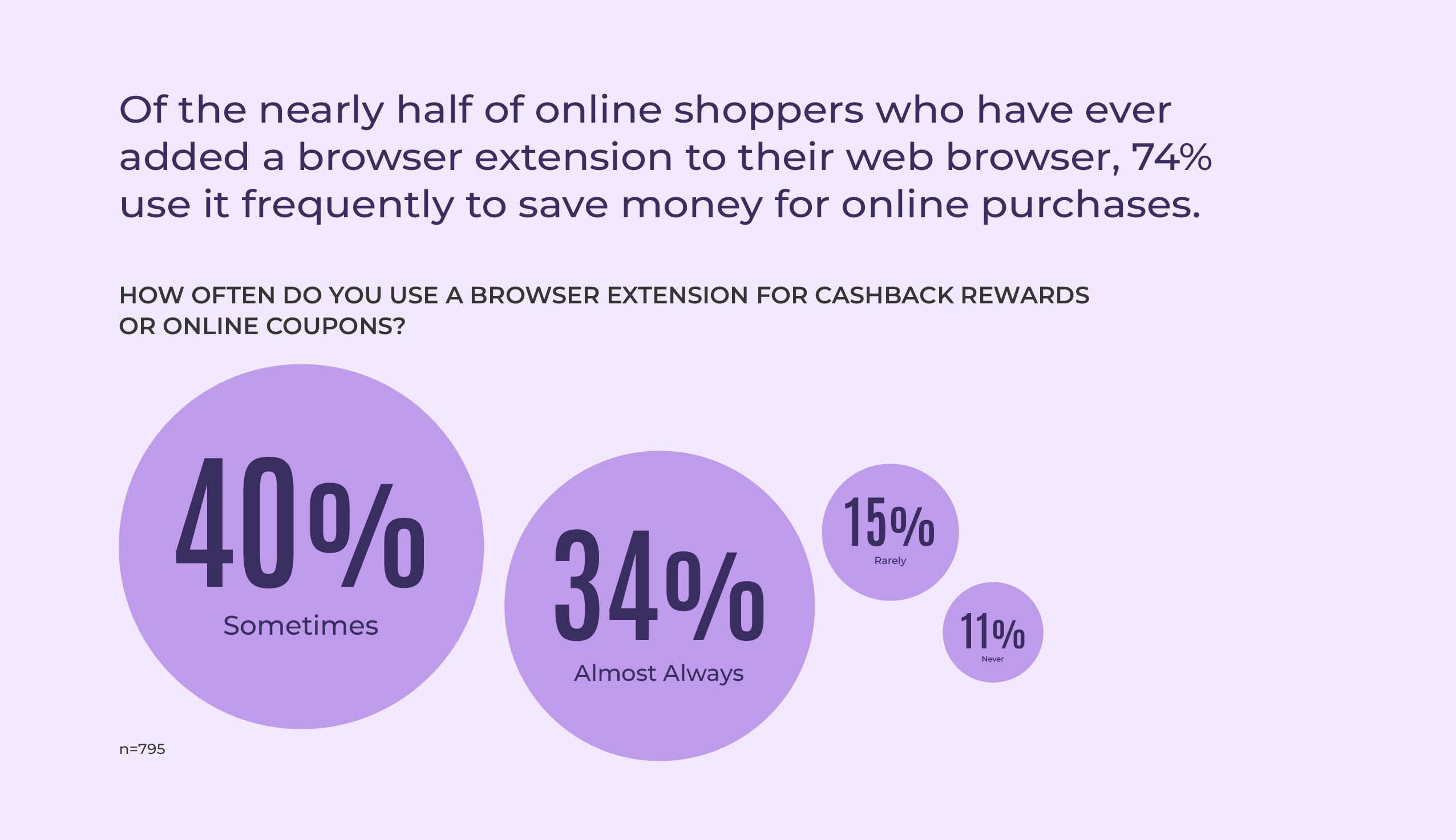Today’s consumers are shopping anywhere and everywhere. Gone are the days when customers only shopped on their desktops. Smart shoppers now seamlessly switch between devices, engaging with brands across a variety of platforms. The rise of smartphones, tablets, and even voice-activated devices has transformed the path to purchase.
This cross-platform behavior also applies to how consumers find and use the tools used to enhance their online shopping and web browsing experience, such as apps and browser extensions.
In fact, browser extensions are being used by more consumers than ever to assist them when shopping online: in a recent survey, we learned that nearly half of US online shoppers have installed a browser extension, and 74% of them use it regularly to find deals and save money when shopping.

Because of this, browser extension marketers need to pay attention to multi-platform consumer behavior, especially because many developers now create both desktop and mobile versions of their extensions. (As of 2021, mobile browser extensions are available in Safari on iOS 15+, but are not available on the Chrome mobile browser for Android.)
How The Multi-Platform Consumer Shops
The key difference between mobile and desktop for shopping is that generally, customers tend to use mobile for browsing, but desktop for purchasing.
- Salecycle notes:
- for their clients, 75% of their traffic comes from mobile devices, but only 55% of their sales come from mobile
- Convince&Convert states:
- 67% of consumers move between platforms when shopping online
- as many as 65% of online purchases begin on a mobile device
At Wildfire, we have seen similar behaviors for browsing on mobile vs. buying on desktop across our clients too. According to our internal data, over half of the clicks to activate cashback occur from our clients’ mobile Safari extensions, but the average purchase conversion rate of those clicks is actually 17% lower than on desktop.
What Does This Mean for Marketers?
What’s the takeaway for companies marketing browser extensions across multiple devices?
In short, users can and will shop across multiple devices, so you should provide access to your product across multiple devices.
Shoppers expect a seamless experience, regardless of the device they're using. A multi-platform strategy demonstrates that your brand understands and values their expectations of convenience.
Best Practices for Cross-Platform Marketing
To best engage browser extension customers across multiple platforms and successfully drive installs of your browser extensions, we recommend the following best practices.
☑️ Meet the user where they are
✔️ DO Give users the opportunity to engage with your extension on the channel they’re already in.
-
- If someone is visiting your site from a desktop or laptop computer, marketing should direct them to the appropriate desktop extension install page.
-
- Before the first install, there is no need to promote a platform they’re not currently using.
- For example: if they’re on mobile, give them the mobile extension journey. If they’re on desktop, let them complete the desktop installation before introducing mobile.
☑️ Guide the user on the next step
✔️ DO give the user a nudge to download the extension on another device, after the first install on one device:
-
- Include it in the welcome email
- Send a reminder email
- In the onboarding process, ask them if they would like a reminder to install on their other devices
❌DON’T interrupt the user journey.
-
- Doing so will risk customers dropping out of the process.
- Cross-surface marketing is better done after the initial install has completed because otherwise, it will break up a user journey and lead to lower install rates.
Beyond the Install: Driving Usage
Of course, the path to success with a browser extension doesn’t stop at the install. Extension usage isn’t guaranteed; you must also encourage the customer to use your extension.
Marketing to drive app or extension usage beyond the install is a whole other topic, but could include such components as continuously educating users about the benefits of using your extension, offering incentives, and/or highlighting user reviews/social proof to establish trust and credibility.
Conclusion
In this era of the multi-platform consumer, businesses must adapt their marketing strategies to mirror the fluidity of modern consumer behavior. Seamlessly aligning with customers as they transition between devices ensures sustained brand resonance and engagement across every touchpoint.







